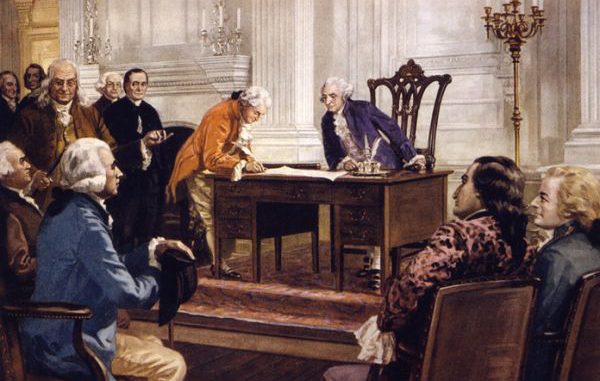
The Articles of Confederation, Part 2
The Articles of Confederation formed the first government of America, but it did not last long. The idea of a weak central government and strong state governments appealed to colonists who had come to fear any type of strong central government. Their prior experiences with England warranted this. A confederacy appealed to the colonists, because of that fear. In Shannon D. Hanson’s first article about the Articles of Confederation, he explained the basics about that document. His follow-up article explains the difficulties that came with having a central government that was too weak. Links to Hanson’s first article about the Articles of Confederation and also the full text of the Articles of Confederation are included at the end of this article. -Editor
Articles Of Confederation – Confederacy Lessons Learned
You may have heard that Thomas Edison once said “I have not failed. I’ve just found 10,000 ways that don’t work.“ Actually, no record exists of him saying exactly that, but the point is valid. The quote, of course, is in reference to Edison’s invention of the electric light. Which is another myth.
Edison didn’t invent the electric light. He did patent and perfect the carbon-based filament which made electric lights viable for home use. His experiments with carbonized cotton thread produced meager results. Edison saw the potential and applied for a patent. It wasn’t until he switched to using bamboo that his light bulb took off. The cotton filament did not do what Edison needed but it lead him towards something that did,
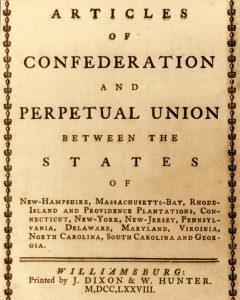
The preamble of the Constitution of the United States of America reflects the founders’ hopes. It also indicates that the framers recognized the inherent good that had come from their earlier work. The Articles of incorporation laid out a loose union among the States. This was no small feat, but it ultimately proved unworkable. That shouldn’t be seen as a failure. Like Edison’s Bamboo lamp filament our current constitution is a product of the lessons we learned.
An Imperfect Union
The Declaration of Independence included the term, United States. But the States were not united when the Declaration was drafted. The thirteen colonies now called themselves States, but nothing else changed. Each operated as a separate entity from the others and had its own set of laws.
By 1776, calls for independence from Britain were growing louder and more frequent among the colonial populace. The leaders of the Colonies were deeply divided on the subject. Virginia asked Richard Henry Lee to bring a resolution of independence to congress. Meanwhile several states had explicitly directed their delegates not to vote for independence,
The colonies stood little chance of prevailing against the British Army unless they could get help from one or more European nations. Those who favored independence argued that as long as the colonies were part of the British Empire no European nation was going to help them. This argument swayed reticent statehouses. The Lee Resolution passed congress on July 2nd 1776. Two days later, the leaders agreed on the text of the Declaration of Independence.
Lengthy Efforts Towards Independence
Lee’s Resolution also called for Congress to form a confederation of the colonies which were now called States. Work on The Articles of Confederation began at once. Debate on the structure and rules of the union were not completed for more than year.
Although the States saw the advantage of joining forces, there was a good deal of mistrust among them. The revolution had roots in the disdain of Britain’s heavy hand. None of the states was keen to replace The king’s thumb with a weighty digit even of their own design. These factors led the to the main reasons the Articles of the Confederacy would prove unworkable.
The key reasons the Articles of Confederation forming a confederacy were not workable:
Very Weak Central Government
Congress had been managing the Continental army since 1775. This was one of the few powers given Congress under the Articles. Interacting with foreign governments and settling disputes between the States were others. They had responsibility, but no real authority. There was no power over money and the government had no ability to levy taxes on imports. There was also no power to administrate or no president or executive to carry out the duties of the nation and there were no courts to settle disputes and interpret laws.
Vetocracy
Although this term hadn’t been coined at the time, it definitely applied. Ratification of the articles required a unanimous vote. The same was true for any amendments. This allowed any one state full veto power. There was no provision to override this veto. This gave a small state as much power as a much larger state.
One example of this was Rhode Island’s override of a provision disallowing States to impose tariffs. This would become one catalyst to the decision to call a constitutional convention.
Inability to Pay Debt
While Congress couldn’t directly tax the people, they could levy the States to pay for the war. The problem is Congress didn’t have any ability to enforce payment. Some states refused to pay any taxes. Some paid a portion. None of the states paid the full amount. Congress could print money but hyperinflation made it worthless.
The army couldn’t pay the money they promised to soldiers. Mutiny and desertion were common. Debt piled up. The United States first defaulted on its debt in 1786.
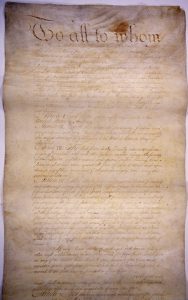
We owed our victory in the war to France, but we were unable to pay back more than 2 million dollars we owed them. Other nations held promissory notes as well.
Unable to Provide for Defense
Cornwallis’ surrender at Yorktown in 1781 demoralized the British. Effectively the war was over. Officially the United States gained its independence from British rule in 1783 with the Treaty of Paris. But the new nation could’t defend its own sovereignty.
When Pirates captured American commerce ships there was no money to pay ransom or to fend off the attacks. Spain closed passage through New Orleans to America and we were powerless to do anything about it. Had any nation attacked us we would have been powerless to defend.
No Unified Trade
Worse, States continued to act with impunity toward other states and the confederation. New York allegedly courted sedition and opened up talks with Canada. States laid embargoes, raised armies and made war. At least two states openly prosecuted British loyalists and took their land. This was in direct violation of the Treaty of Paris. Congress had some rule making authority but no enforcement ability. Any one of the thirteen states could ignore a treaty written by the new government.
Statesmen, including James Madison, questioned if the Articles of Confederation provided a binding Government.
Then, Came Rebellion…
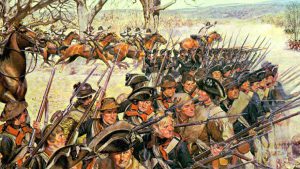
In 1786, Farmers in Massachusetts faced an untenable situation. Creditors, who had previously allowed bater were now demanding payment in hard currency. But there was little currency in circulation. Taxes played a role as well. They were higher than they had been under British rule. Farm owners were being arrested and farms were being foreclosed to satisfy private debtors. Many of these farmers were veterans who had been paid so little for their service they struggled to make ends meet.
Protests began as early as 1782 when Job Shattuck organized resident of the Groton Mass. area to physically prevent tax collectors from doing their work. There were a few other such actions, but mostly communities petitioned the State Government seeking their help.
The State Legislature adjourned without hearing most of the petitions. This led the farmers to become more direct in their approach. The resultant uprising and eventual insurgency was named Shays Rebellion after Daniel Shays, one of its leaders.
Rebellion’s Impact
A few months after it started in earnest the revolt was put down, but it had lasting impact.
By the time of Shays Rebellion, the weaknesses of the Articles of Confederation were clear. Two primary schools of thought in the day were the Federalists and the Anti-Federalists. Both used the events in Massachusetts to promote their cause.
Federalists claimed that even a simple insurgency could not be properly dealt with under the Articles of Confederation.
John Jay wrote that these rural disturbances and the inability of the central government to fund troops in response made “the inefficiency of the Federal government more and more manifest.”
Anti-federalists claimed that since Massachusetts was able to put down the rebellion on its own, that proved a stronger federal government was not needed.
Benjamin Franklin thought such rebellions were par for the course. A famous quote of his was a reaction to the news of the rebellion “The tree of liberty must be refreshed from time to time with the blood of patriots and tyrants. It is its natural manure.”
A Fresh Start
How much did Shays Rebellion play in to the call for a constitutional convention?” The answer is not clear. It is known to have had an effect on the debate and in the eventual makeup of the new government.
Protectionist trade barriers put in place by some States was a part of the springboard that led to a call for a constitutional convention. The intent of the convention was to “render the federal constitution adequate to the exigencies of government and the preservation of the Union.”
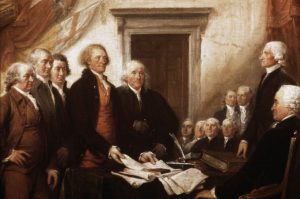
George Washington came out of retirement to lead the convention. When the new constitution was drafted and signed, he was unanimously chosen to be the first president of the new United States of America.
The New Constitution
March 4 1789 was the date set the newly ratified constitution to take effect.
Anti-government sentiment was bright among the sparks that lit the fire in which the United States was forged. But we quickly learned some central authority was needed to maintain a viable nation. The Articles of Confederation created a structure which was common at the time. The United States proved itself greater than commonality. The lessons learned from the Articles framed the debate which resulted in a type of Government previously untried anywhere.
Also, see these articles on The Founding Project’s website and watch for a coming article on Lee’s Resolution:
https://thefoundingproject.com/forgotten-articles-confederation/
https://thefoundingproject.com/articles-confederation-complete-text/
Sources:
https://constitutioncenter.org/learn/educational-resources/historical-documents/perspectives-on-the-constitution-a-republic-if-you-can-keep-it https://www.ushistory.org/US/15a.asp https://history.state.gov/milestones/1784-1800/loans https://www.history.com/topics/american-revolution/american-revolution-history https://www.history.com/topics/american-revolution/siege-of-yorktown https://allthingsliberty.com/2013/09/the-gunpowder-shortage/ https://www.americanforeignrelations.com/E-N/Embargoes-and-Sanctions-The-revolutionary-war-era.html https://history.state.gov/milestones/1776-1783/continental-congress https://history.state.gov/milestones/1776-1783/treaty https://guides.loc.gov/american-revolution
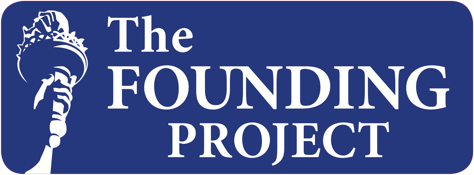

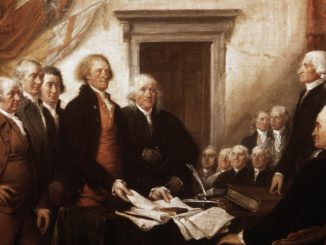
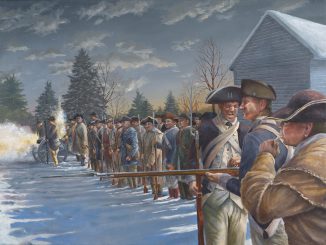

Leave a Reply